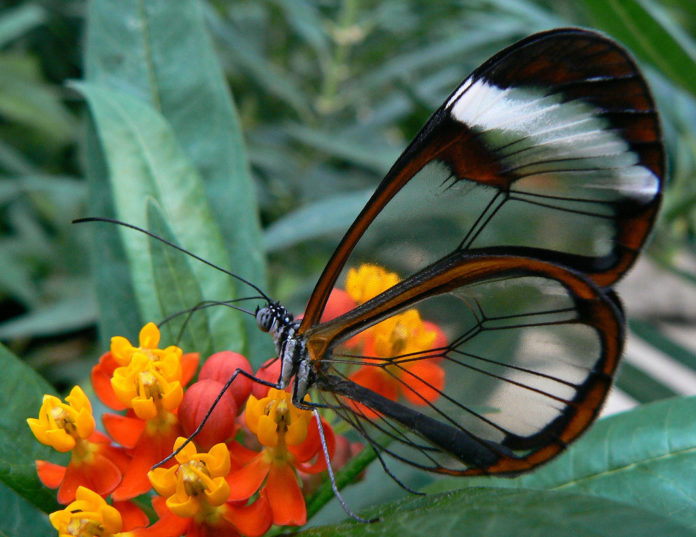A butterfly adept at camouflage can be the inspiration for new implants to save eyesight
To stay hidden from predators, the long-tail glasswing butterfly relies on a pretty unusual type of camouflage.
Patterns of tiny bumps on this South American butterfly’s wings allow it to appear completely transparent. Now, engineers have mimicked these nanostructures in an eye implant for people with glaucoma.
By scattering light like the butterfly wing does, this implant could give accurate readings of the fluid buildups that can eventually lead to blindness.
Eye implants the size of a sesame seed can reveal changes in pressure when a light shines on them. They are built from a flexible membrane stretched over a mirror
Glaucoma is a group of diseases that damage the eye’s optic nerve and can result in vision loss and blindness. However, with early detection and treatment, the eyes can be protected against serious vision loss. Glaucoma causes irreversible blindness in around 5 percent of cases.
“There’s times when the pressure really spikes, it seems that’s when the damage is being done to the optic nerve.” says Hyuck Choo, a medical and electrical engineer at the California Institute of Technology in Pasadena and co-author of a study published in Nature Nanotechnology.
There are medications that reduce pressure in the eyes, but knowing exactly when to take them could give people a better shot at avoiding vision loss. “They must be able to monitor this pressure round the clock, 24 hours a day,” Choo says.
Scientists are working on eye implants the size of a sesame seed that would reveal changes in pressure when a light is shined on them. The implant is built from a flexible membrane stretched over a mirror with a small empty space in between.
When pressure inside the eye increases, the membrane bends. This makes the gap narrower, changing the wavelength of reflected light. This implant will help people to use the light from a cell phone to track eye pressure from their own homes.
Until now, however, the implant could only give accurate readings if the light and pressure-reading device were held directly in front of the eye. This won’t work for people with shaky hands, Choo says. “The patient must be able to make measurements easily, instead of going through this tedious optical alignment procedure.”
The glasswing butterfly’s wings offer a solution to this problem. Like other insects with transparent wings, it has dome-shaped structures arranged in patterns that allow light to pass straight, instead of being reflected back. But the long-tail glasswing butterfly also uses a second, more unique trick to make its wings clear.
On the part of the wing closer to its body, the nanostructures are spaced apart. This arrangement scatters visible light in all directions, no matter what angle it came from. It also reflects UV light, which may be a way for the butterflies to signal to mates while staying concealed from some predators.


